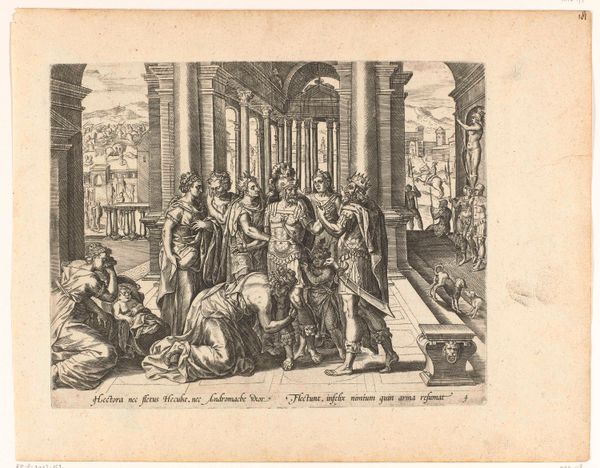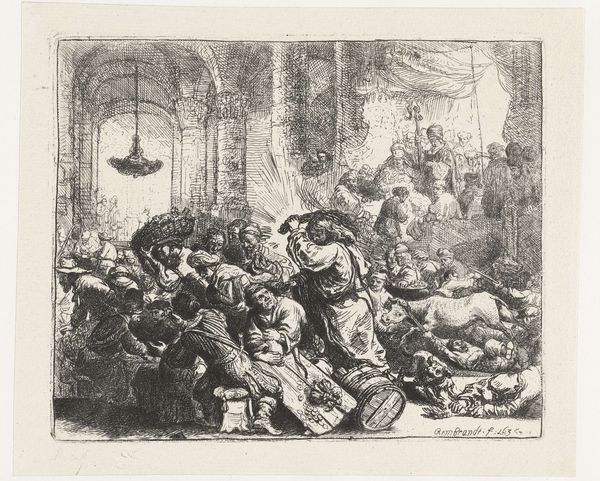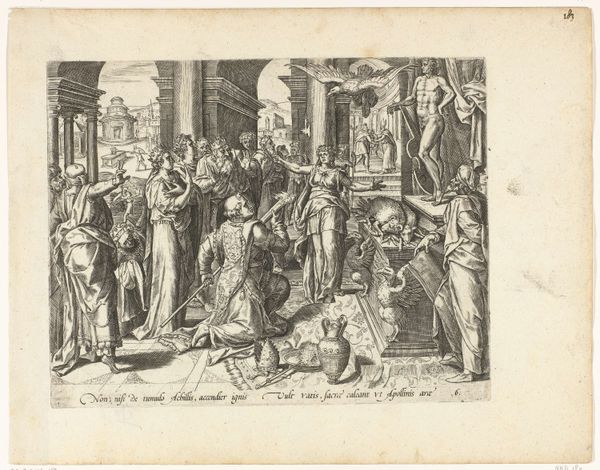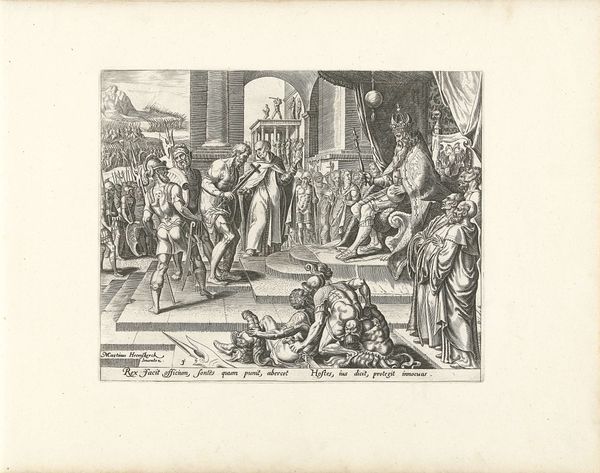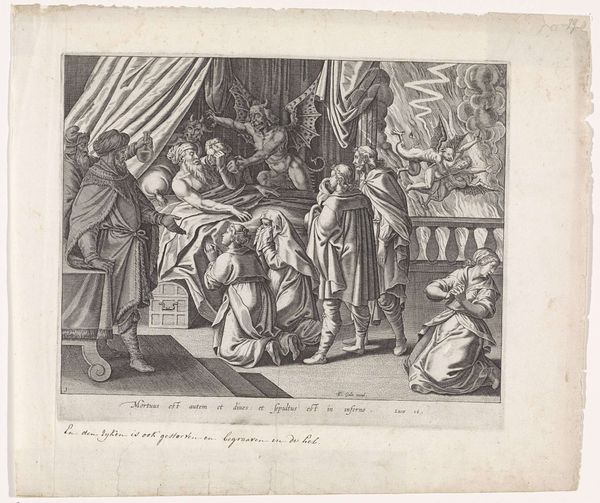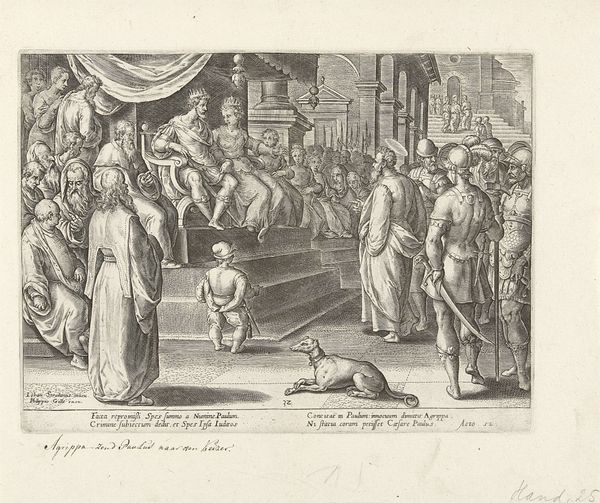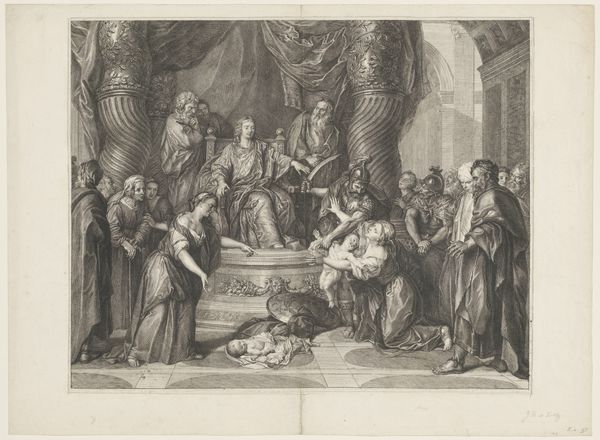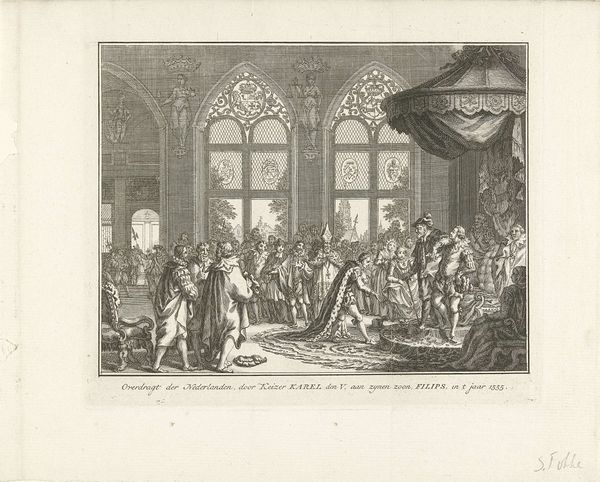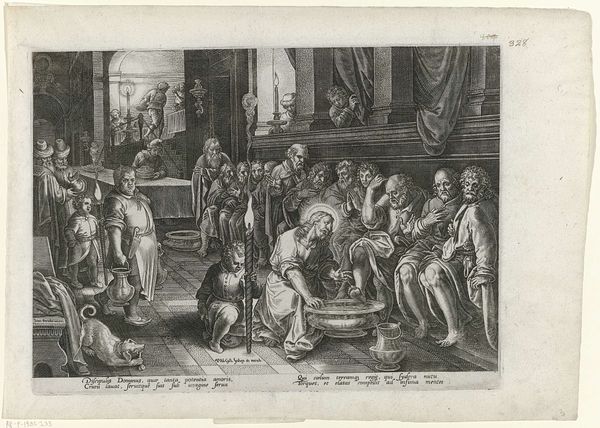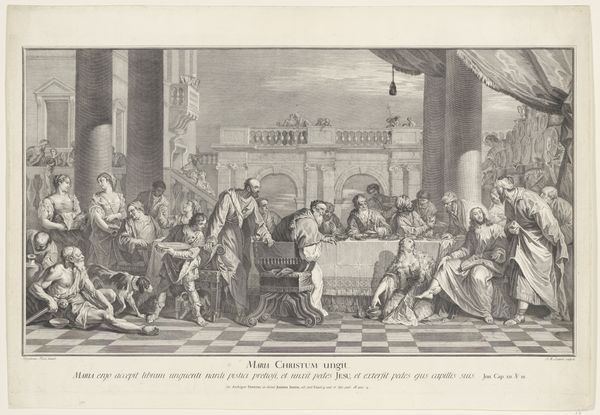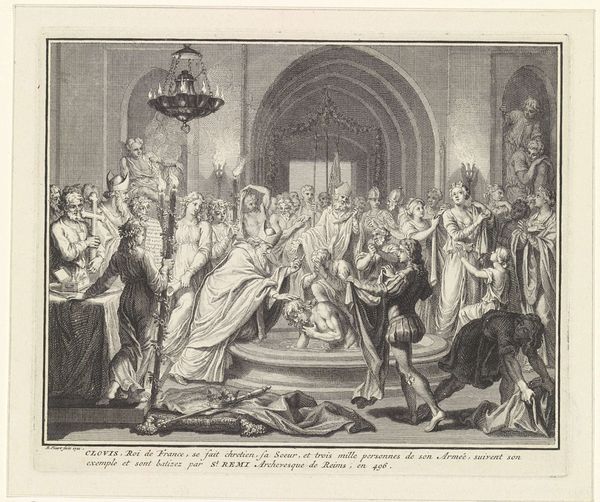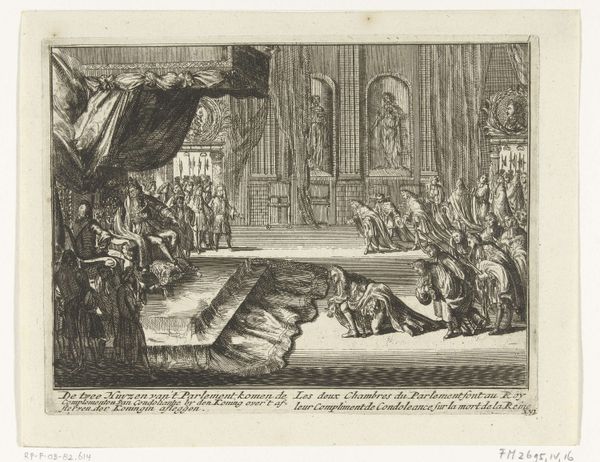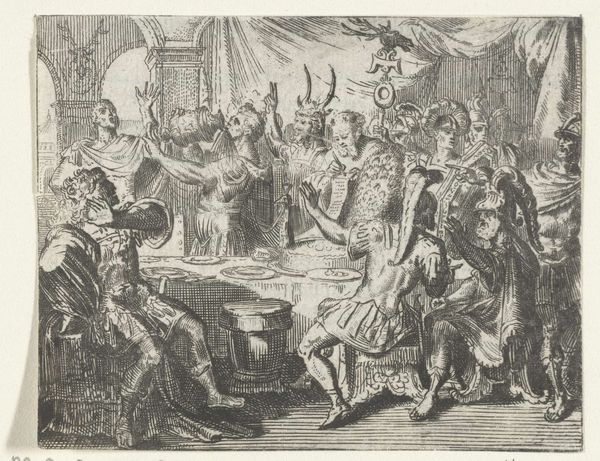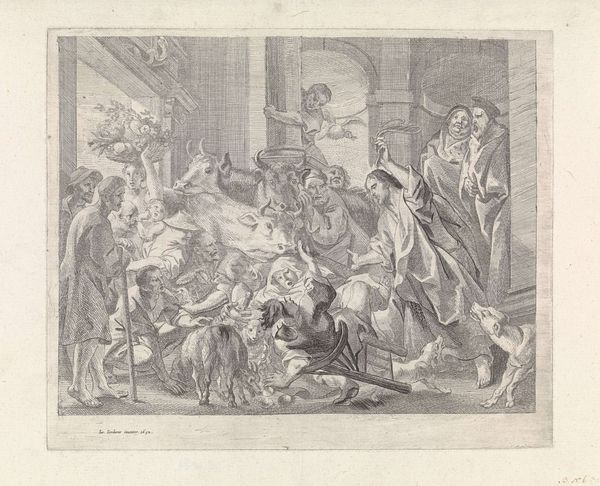
print, engraving
#
baroque
#
dutch-golden-age
# print
#
cityscape
#
history-painting
#
engraving
Dimensions: height 216 mm, width 322 mm
Copyright: Rijks Museum: Open Domain
Romeyn de Hooghe created this print, Rechtspraak van graaf Willem III, 1336, in the late 17th or early 18th century. As an etching, this work is all about process, and the labor of image-making. De Hooghe would have started with a copper plate, covering it with a waxy ground. Then, using a sharp needle, he would carefully scratch away the ground to expose the metal underneath. The plate was then submerged in acid, which bit into the exposed lines, creating grooves. Ink was then applied to the plate, filling these grooves, and the surface was wiped clean. Finally, the image was transferred to paper under high pressure using a printing press. Look closely, and you can see the incredible detail achieved through this process, from the textures of the fabrics to the expressions on the figures' faces. Think about the sheer amount of time and skill required to create such a complex composition. Though this was a reproductive medium, used to disseminate images widely, the artistry involved is undeniable. Hopefully, this gives you a new appreciation for the artistry and the labor involved in printmaking.
Comments
No comments
Be the first to comment and join the conversation on the ultimate creative platform.
